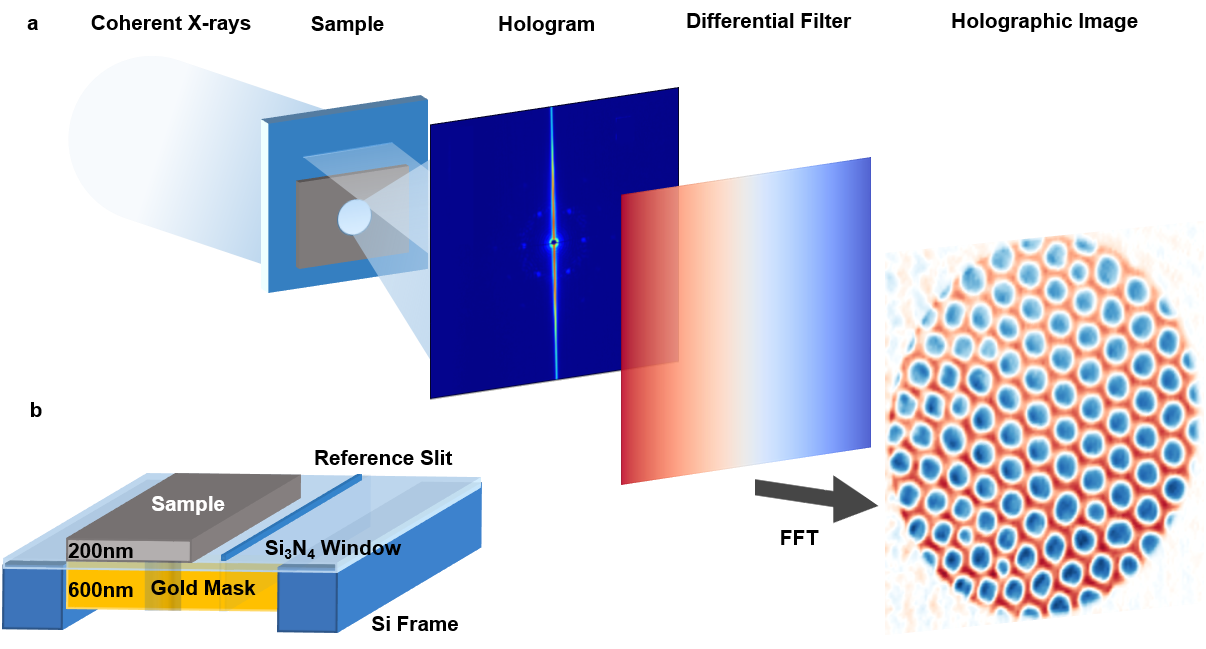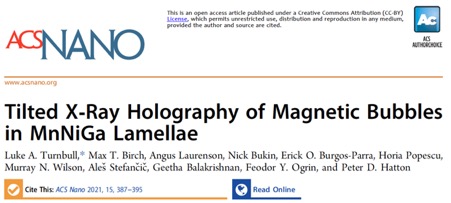
Fourier transform holography is a standard technique for visualising small objects. Recently members of the UK Skyrmion Project have achieved an important step towards being able to provide 3D tomographic images of magnetic objects. Using the SEXTANTS beamline at the SOLEIL synchrotron PhD student Luke Turnbull and others were able to produce high-resolution x-ray images of the magnetic textures in a thin s
Developing x-ray holography for 3D tomographic imaging of magnetic nanosized objects
Fourier transform holography is a standard technique for visualising small objects. Recently members of the UK Skyrmion Project have achieved an important step towards being able to provide 3D tomographic images of magnetic objects. Using the SEXTANTS beamline at the SOLEIL synchrotron PhD student Luke Turnbull and others were able to produce high-resolution x-ray images of the magnetic textures in a thin sample of the ferromagnetic alloy MnNiGa. The technique and sample are depicted in the diagram below.

Magnetic contrast was achieved by tuning the energy and polarisation of the of the x-ray beam to a soft x-ray absorption edge of the magnetic ions of the sample. However, this produces just an image of the sample magnetisation. By taking separate holograms as a function of tilting the sample Luke and his team were able to determine the winding direction of the bubble domain walls.

Using such tilted x-ray holograms is an important step towards full 3D magnetic tomography of nanosized magnetic objects such as skyrmions. These results feature on-line as a research highlight of SOLEIL
and have recently been published in the international high impact journal ACS Nano.



/prod01/prodbucket01/media/durham-university/departments-/physics/teaching-labs/VT2A9034-1998X733.jpeg)